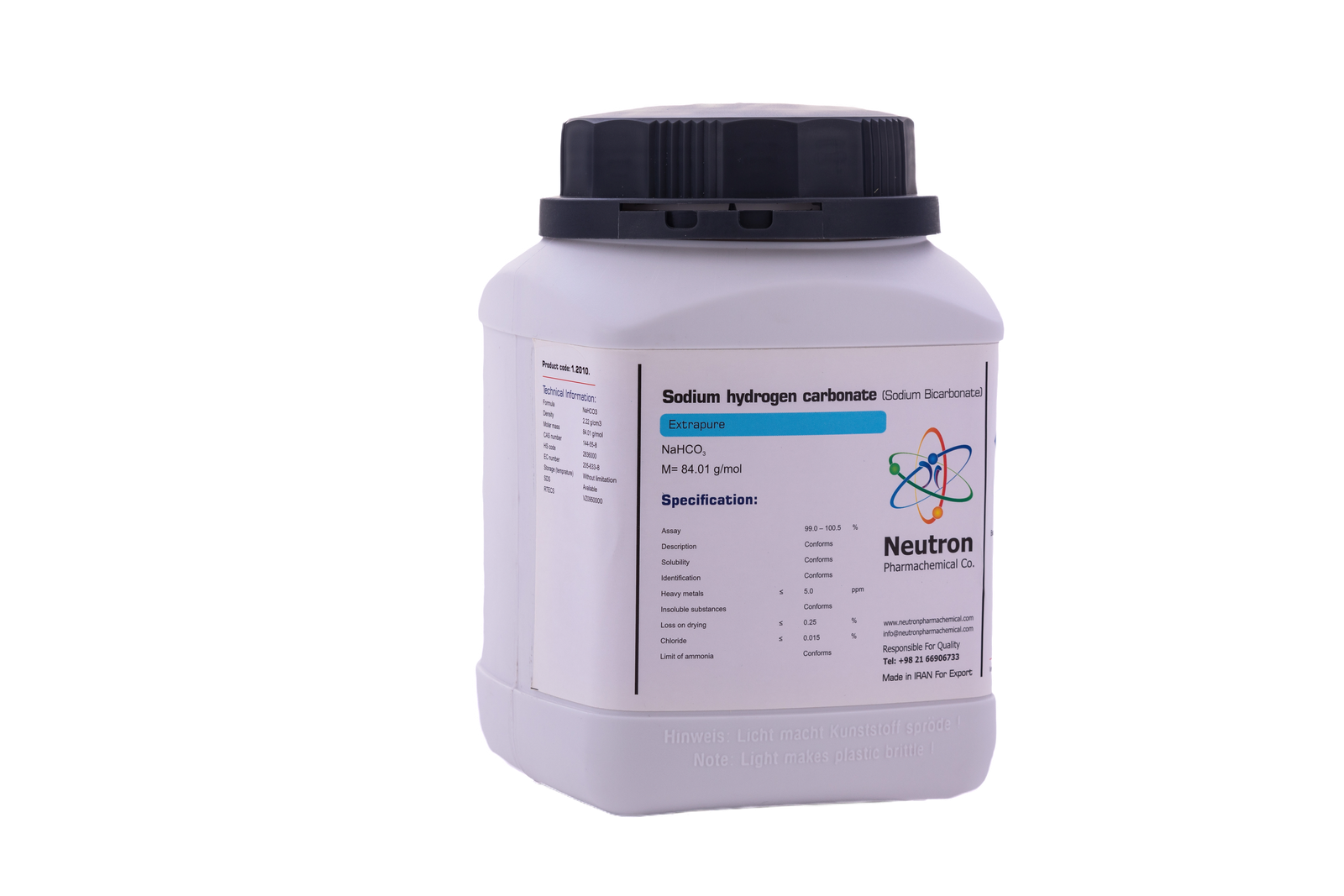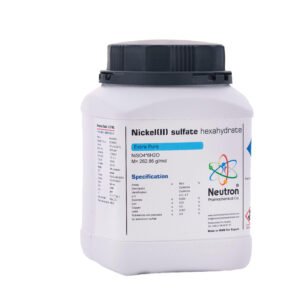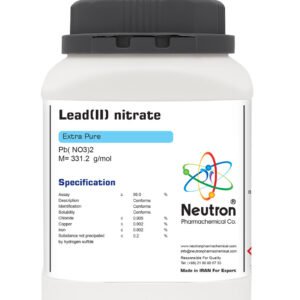Sodium hydrogen carbonate(sodium bicarbonate)
| Formula | NaHCO3 |
| Density | 2.22 g/cm3 |
| Molar mass | 84.01 g/mol |
| CAS number | 144-55-8 |
| HS code | 2836000 |
| EC number | 205-633-8 |
| Storage (temprature) | Without limitation |
| SDS | Available |
| RTECS | VZ0950000 |
| Assay | 99.0 – 100.5 | % | |
| Description | Conforms | ||
| Solubility | Conforms | ||
| Identification | Conforms | ||
| Heavy metals | ≤ | 5 | ppm |
| Insoluble substances | Conforms | ||
| Loss on drying | ≤ | 0.25 | % |
| Chloride | ≤ | 0.015 | % |
| Limit of ammonia | Conforms |
Sodium hydrogen carbonate (sodium bicarbonate) is a white crystalline powder commonly used in food, medicine, and chemical applications as a mild base and buffering agent.
🏭⚗️ Production
Sodium bicarbonate is produced industrially through the Solvay process, where carbon dioxide is passed through a concentrated solution of sodium carbonate and ammonium bicarbonate, leading to the precipitation of sodium bicarbonate crystals.
🔬 Properties
Sodium hydrogen carbonate appears as a white, odorless crystalline solid with a slightly alkaline taste. Its chemical formula is NaHCO₃, and it has a molar mass of approximately 84.01 g/mol. It is moderately soluble in water, decomposes upon heating to release carbon dioxide, and has a decomposition point around 50°C to 60°C.
🧪 Applications
Sodium bicarbonate is widely used as a leavening agent in baking, a pH buffer in pharmaceuticals, and an antacid for relieving heartburn. It is also used in fire extinguishers, cleaning products, and chemical laboratories as a mild alkali.
⚠️ Safety
Sodium bicarbonate is generally considered safe and non-toxic in typical household and industrial concentrations. However, excessive ingestion may lead to metabolic alkalosis, and dust may cause minor eye or respiratory irritation. It should be stored in a dry, sealed container away from acids and moisture.





